 BLOG
BLOGThe theme of the 2018 High-level Political Forum on sustainable development will be "Transformation towards sustainable and resilient societies.” In the lead-up to the Forum, weekly blogs by representatives of Member States, UN system, and major groups and other stakeholders will be featured on this page to present various perspectives on this theme. The role of SDGs 6, 7, 11, 12, 15 and 17 will also be highlighted, as these goals will be in focus at this year’s Forum. Follow #HLPF on social media for the latest blogs and other HLPF updates.

The theme of the 2018 High-level Political Forum on Sustainable Development, to be held from 9-18 July 2018 in New York, is "Transformation towards sustainable and resilient societies". Considering the current global trends that are putting stress on our interconnected societies, economies and environment, such a transformation is urgently needed.
Inequalities within and between countries continue to grow. In many places, individuals or groups confront barriers that prevent them from fully participating in economic, social and political life. The rapid urbanization of the past decades has brought enormous challenges, including growing numbers of slum dwellers, increased air pollution, inadequate basic services and infrastructure, and unplanned urban sprawl. Creating more inclusive, safe, resilient and sustainable urban spaces is a priority.
Without ensuring access to safe water and sanitation for all and sound management of freshwater ecosystems, the inequality divide will not close and the Sustainable Development Goals (SDGs) will not be achieved. The advancement of sustainable energy has an equally fundamental role in attaining the SDGs, as it is crucial for eradicating poverty, advancing health, education, water supply and industrialization, and for combating climate change.
To achieve sustainable and resilient societies, we also need to establish strong national frameworks for sustainable consumption and production, sustainable business practices and consumer behavior and adherence to international norms on the management of hazardous chemicals and wastes. The ecosystem challenges that we face are also numerous, and include the decline in land productivity and the increase in biodiversity loss, poaching and trafficking of wildlife.
The 2030 Agenda for Sustainable Development adopted by Member States in 2015 has the potential to address all these challenges, but to do so its implementation needs to progress timely and effectively. Leaving no one behind and reaching the furthest behind first is critical, including by empowering the most marginalized groups and their families so that they can lead decent and productive lives.
A solid follow-up and review framework for the Agenda’s implementation is essential to ensure that our collective efforts are on track. The High-Level Political Forum on Sustainable Development (HLPF), which is the global platform for follow-up and review of the 2030 Agenda and the SDGs, gives guidance and political recommendations through its Ministerial Declaration. Countries, UN system and major groups and other stakeholders alike gather annually at the HLPF to share experiences, challenges and lessons learned in implementing this Agenda and its 17 Sustainable Development Goals thus driving and focusing our efforts.
The HLPF 2018 will review Sustainable Development Goals 6,7,11,12 and 15 and their interlinkages with all SDGs. As every year the HLPF will also review Goal 17 on strengthening the means of implementation and revitalizing the Global Partnership for Sustainable Development.
These goals and their interlinkages, including with other international agreements such as the Paris Agreement on climate change and the Sendai Framework for disaster risk reduction, provide an excellent opportunity to look at our economies and societies and to discuss and define strategies and policies that will make our societies more sustainable and resilient, from circular economy to reducing the human ecological footprint.
A critical element of the HLPF’s follow-up and review mechanism are the Voluntary National Reviews (VNRs) by Member States on their follow-up and implementation of the 2030 Agenda and the SDGs. These VNRs can also serve as important vehicles to strengthen policies and institutions and to mobilize multi-stakeholder support and partnerships for the implementation of the SDG at all levels.
I would like to express my deep appreciation to the 48 Countries that have volunteered to present Voluntary National Reviews in 2018. They are: Albania, Andorra, Armenia, Australia, Bahamas, Bahrain, Benin, Bhutan, Cabo Verde, Canada, Colombia, Dominican Republic, Ecuador, Egypt, Greece, Guinea, Hungary, Iceland, Ireland, Jamaica, Kiribati, Lao People's Democratic Republic , Latvia, Lebanon, Lithuania, Mali, Malta, Mexico, Namibia, Niger, Paraguay, Poland, Qatar, Republic of the Congo, Romania, Saudi Arabia, Senegal, Singapore, Slovakia, Spain, Sri Lanka, State of Palestine, Sudan, Switzerland, Togo, United Arab Emirates, Uruguay, Vietnam.
I invite everyone to follow this blog series on the 2018 High-Level Political Forum. Published regularly in the lead-up to the 2018 HLPF, it will highlight different perspectives by various actors on “Transformation towards sustainable and resilient societies” and the SDGs in focus at the 2018 Forum.
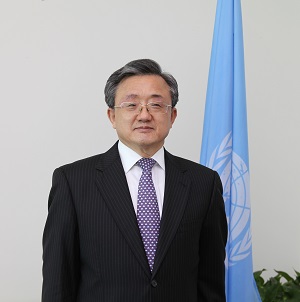
Preparations for the 2018 High-level Political Forum on Sustainable Development (HLPF), to be held from 9 to 18 July in New York, are already underway.
As the main United Nations platform for follow-up and review of the 2030 Agenda for Sustainable Development and the SDGs, the 2018 HLPF will carry out in-depth reviews of progress on SDGs 6, 7, 11, 12, 15 and 17, and their inter-linkages with other Goals. A record number of 48 countries will present Voluntary National Reviews (VNRs) on the status of their implementation of the 2030 Agenda to the forum.
The 2030 Agenda is owned and driven by countries, and the progress of its implementation depends on national actions. Country-level actions that effectively translate the SDGs to the national level, and engage all sectors of society, are crucial for success. The HLPF supports such actions by providing a global space where governments, local authorities, civil society, private sector, academia, the scientific and technological community and others can all come together to share and exchange their experiences on implementing the transformative SDGs.
The eight days of the Forum in July, however, are only a culmination of numerous activities by many actors in the months leading up to it. A number of preparatory meetings will be organized at the national, regional and global levels in the months ahead. At the national level, the VNR process is becoming a consultative and participatory one, engaging multiple stakeholders. It is expected to rally support and marshal resources for implementation. It is not an end in itself, but it plays an increasingly important role in outreach, in sharing experiences, in identifying gaps and in mobilizing action.
At the regional and global levels, there are similar engagements. These include a series of preparatory meetings organized by UN DESA, in close collaboration with Regional Commissions and other UN entities, for the countries that will present VNRs at the HLPF in 2018.
A snapshot of general characteristics of early implementation of the 2030 Agenda can be found in the Synthesis Report 2017 prepared by DESA. The report identifies challenges and examples of implementation from the countries that presented VNRs to the HLPF in 2017. It looks at a range of actions and policy measures relating to implementation, including ownership and involving stakeholders, institutional mechanisms, incorporation of the SDGs into national frameworks, means of implementation and an overview of how countries addressed goals and targets in the VNRs.
Additionally, with UN system-wide support, regional preparatory meetings (Regional Forum on Sustainable Development) will be organized by the five UN Regional Economic Commissions this Spring.
A number of thematic expert group meetings on SDGs 6, 7, 11, 12, 15 and 17 and on the interlinkages between the SDGs will also be held in the lead-up to the HLPF.
As in past years, I am certain that the 2018 HLPF will again benefit from active multi-stakeholder engagement throughout the preparatory process. During the 2018 HLPF, an SDG Business Forum, a multi-stakeholder Partnership Exchange, a gathering of Mayors and other local and regional authorities, SDGs Learning, Training and Practice sessions and many other events will be organized, allowing for a sharing of diverse perspectives on SDGs implementation.
I invite you to visit the website of the High Level Political Forum on Sustainable Development for further information on this year’s session. Please join us in this global gathering for SDGs, in our global effort to leave no one behind.
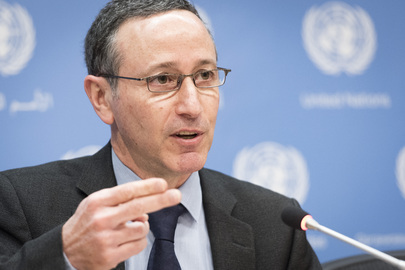
In recent days, world headlines have been dominated by the mudslides in California which at the time of writing have claimed 17 lives and injured many more. The economic losses triggered by the sudden flows of earth, rocks and debris from hillsides stripped bare by last year’s wildfires will add further to the US$300 billion of economic losses suffered by the US in the last year.
Last August, Sierra Leone had a similar environmental disaster but the death toll was enormous. Hundreds died when a nighttime mudslide destroyed, without warning, whole neighborhoods in Freetown as torrential rain swept down hillsides stripped bare to provide fuel and farmland for impoverished households.
It’s a stark illustration of the fact that disaster fatalities are more influenced by socio-economic vulnerability, and exposure or lack of protection from the elements, than by the hazard itself.
Since 1990 almost 90% of mortality recorded in major internationally reported disasters has occurred in low and middle income countries.
Poverty and Inequality are major obstacles to reducing disaster losses and achieving the Sustainable Development Goals.
Nothing lays bare the resilience gap in today’s world like a disaster triggered by a flood, a storm, an earthquake or a heatwave.
Some 220,000 people died in the 2010 earthquake which rocked Haiti reducing the capital Port-au-Prince to rubble with economic losses equivalent to 120% GDP, setting back the country’s development efforts by many years.
In least developed countries particularly, the inadequacy of the built environment is often exposed by major disasters and underlines the importance of taking specific steps to upgrade slums which house more than 800 million people and turn them into sustainable cities and towns with thriving communities which are inclusive, safe, resilient and sustainable.
Economic losses ensuing from disasters devour a much greater proportion of GDP in countries at the lower end of the Human Development Index than among those at the top despite the great difference in terms of absolute economic losses. Average annual disaster losses are equivalent to 22% of social expenditure in low-income countries.
The World Bank estimates that disasters force 26 million people into poverty every year. An ODI briefing paper for the World Humanitarian Summit calculated that as many as 325 million extremely poor people could be living in the 49 most hazard-prone countries by 2030.
The Sisyphean nature of the task ahead, if we do not step up investment in disaster risk reduction, is further emphasized by the fact that disasters contributed to a rise in world hunger of 38 million people in 2016 and the displacement of over 20 million people.
The good news though is that we have an opportunity like never before to avoid the creation of new disaster risk and apply the brakes to economic losses.
It is estimated that US$6 trillion will have to be invested annually in infrastructure (urban, land-use and energy systems) by 2030. This unprecedented drive towards urbanization can come as a great boon to many if it is carried through in a manner which avoids the creation of disaster risk and seeks to reduce existing levels of risk.
According to analysis in UNISDR’s 2015 Global Assessment Report for Disaster Risk Reduction, typical benefit to cost ratios for prospective disaster risk management lies in the range of 3:1 to 15:1. If indirect benefits for these new towns and cities are factored in then the dividends of risk informed investment will pay off in many positive ways beyond simply avoiding future disaster losses.
One obvious area is the reduced cost of response and recovery in an era when climate change is already having an impact on the frequency and intensity of extreme weather events. This can leave more money to be spent in vital areas such as eradicating poverty and hunger, and providing health and education for all.

In 2010, the United Nations declared access to safe, clean drinking water and sanitation to be a human right. Five years later, UN Member States reaffirmed their commitment to this human right in the 2030 Agenda for Sustainable Development and through the targets of Sustainable Development Goal (SDG) 6 - "ensure availability and sustainable management of water and sanitation for all".
As we move into the third year of the 2030 Agenda, it might seem too early to expect substantial progress. However, with the latest SDG report UN Secretary-General António Guterres stressed that "implementation has begun, but the clock is ticking". There is already a sense that the pace of progress is too slow to meet targets by 2030.
But much of this early anxiety is rooted in limited country baseline data and underdeveloped statistical capacity . Compounding the challenges of initial SDG assessments is that, while indicators have been determined for all SDGs, clear methods of measuring indicators have not. Without a standardised and confident way to determine progress, ongoing implementation becomes clouded.
Water - specifically SDG 6 - is a perfect example of this dilemma.
Each of the 169 SDG targets will be measured through one or two indicators, and for SDG 6 nine core indicators have been agreed and accepted. The next step is to agree on how to measure these nine indicators. So far, methods have been established to measure four, but the practicality of measuring these four indicators to build reliable baseline data is difficult for many countries. As a result, official country progress reports have been rudimentary so far.
A fundamental reason for this is because most countries, from both high- and low-income brackets, are still working to realign their political, institutional and planning mechanisms to deal with expectations of the SDGs. In 2017, 43 countries voluntarily reported on progress against a small number of SDGs. Among the range of challenges and advances each country reported, the action group 'Together 2030' concluded that the weakest area was in reporting concrete actions taken for SDG implementation.
And SDG 6 is no exception. It is uncertain how each nation will decide their water priorities and paths. So far, there is only one universal agreement: 'business as usual' will mean we all fail.
Changing the 'business as usual' approach will require evidence-based decision making - and evidence in the water sector is hard to come by. The sector is characterised by multiple stakeholders; conflict between environmental, social and economic agendas; and complex science, with a level of uncertainty under changing environmental conditions. National water agendas are difficult to manage even by experts, which leads to difficulties in using data to develop policy that can lead to ambitious action under SDG 6.
To overcome this, UN agencies, non-government organisations and governments around the world are working to improve evidence building and then linking that to a better understanding of water management solutions. One strong example is the SDG Policy Support System ( SDG PSS) developed by the United Nations University Institute for Water, Environment and Health in partnership with the UN Office for Sustainable Development, the Korean Ministry of Environment, and the Korean Environment Corporation . The system enables national governments to leverage existing and emerging national and international data, to automatically build robust and dynamic evidence that is fit for policymaking and planning around SDG 6.
The SDG PSS has been designed to encourage one agreed, and therefore authoritative, evidence base for policy use. As data are collated into the SDG PSS, the system automatically synthesises and evaluates the data against SDG 6 targets and indicators. In this way, users can view strengths, gaps and needs for SDG indicators in one summary.
The SDG PSS is currently being trialled in five countries, but it is freely available for trial use and review by policymakers, international organisations and water experts. The goal is to offer a completed version globally by mid-2018.
The ambition of the SDG 6 targets reflects the urgency and scale of the global water crisis. However, the scale of challenges we need to face and solve are daunting. Initiatives like the SDG PSS provide a simple starting point - a way for national governments to effectively formulate implementation plans and policies from a reliable baseline of evidence that can guide us to real SDG progress.
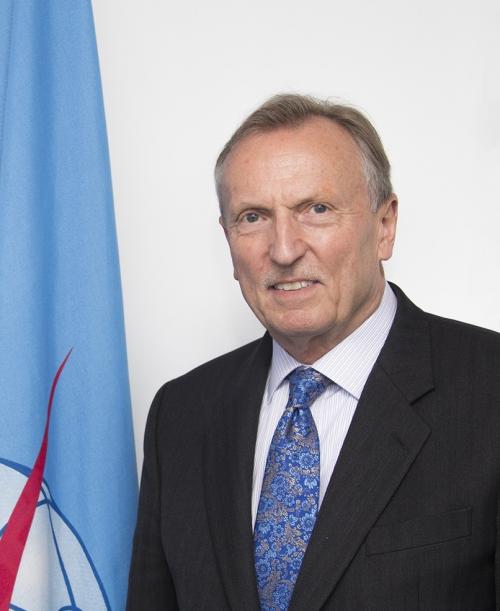
More than 50% of the world’s population lives in urban areas. By 2050, it will be nearly 70%. This raises huge challenges for municipalities and city planners. Information and communication technologies (ICTs) offer the solution to many of these challenges. At the International Telecommunication Union (ITU), the United Nations’ specialized agency for ICTs, we are working to develop the tremendous potential ICTs have to help build smarter, more sustainable cities.
Indeed, many cities across the world are already utilizing Big Data analytics gathered from smart sensors and connected devices to manage traffic, reduce energy usage – and improve a wide range of urban operations and services.
If we want to reach the targets set out by the UN Sustainable Development Goal No. 11 (SDG 11), we need to work together to develop the tools that will help cities become truly smart and sustainable.
To succeed, international organizations, national governments, municipalities and local partners from civil society, academia and the private sector need to join forces.
Taking action
Thankfully, there are encouraging signs of such collaboration.
ITU and the United Nations Economic Commission for Europe (UNECE) launched "United for Smart Sustainable Cities" (U4SSC) in 2016. U4SSC is now supported by 16 United Nations bodies, and over 50 cities have now joined ITU’s pilot project.
U4SSC has facilitated the development of internationally recognized key performance indicators (KPIs) which allow cities to set goals and measure progress on becoming smarter and more sustainable. The indicators, developed by international experts in ITU and UN bodies, fall under five overarching categories: the use of ICTs; physical infrastructure; equity and social inclusion; quality of life; and environmental sustainability.
Recently, many cities including Dubai, Singapore, Montevideo, Maldonado, Moscow, Valencia, Pully and Rimini have asked ITU for assistance in the implementation of the U4SSC KPIs. In the past few months ITU has published case studies on the efforts of Dubai and Singapore to apply smart city innovations, providing a valuable reference point to other cities pursuing greater efficiency and sustainability.
The creation of smart cities require a trusted infrastructure capable of supporting an enormous volume of ICT-based applications and services, which in turn requires coordinated adherence to common standards that ensure openness and interoperability. ITU develops international standards to enable the coordinated development of Internet of Things technologies and their application in smart cities. They also outlined how smart grids can help to build more controllable and efficient energy systems. Work on standards for smart 5G systems, which will help improve the feasibility of smart processes in large urban areas, is underway.
More efficient cities, by and for people
Standards can be powerful agents of change. Their application allows cities to reduce energy costs and emissions through more efficient buildings, electricity grids, street lights, transportation systems, and energy and water networks at a time when cities already account for 70% of greenhouse gas emissions.
But smart, sustainable cities are about more than just reduced energy costs and emissions—they also aim for the realization of a better quality of urban life for all. New intelligent solutions, underpinned by smart sensors, can improve the safety and well-being of inhabitants.
Here are just a few examples: In Singapore, sensors and cameras build on an existing digital system to enable the government to send signals to drivers to improve traffic flow. In Kolkata, a social enterprise is using geographic information systems to map unplanned settlements, providing addresses and vital services for the inhabitants. In Quito, a mobile platform for women to report sexual harassment on the municipal public transport system is improving the way the city is policed. Digital technologies are also used to enhance citizen engagement and participation.
A radical shift for resilient and sustainable societies
The transformation towards resilient and sustainable societies requires the redesign of our cities as well as a radical shift in our patterns of production, consumption, and waste.
Digital technologies give us an opportunity to develop more intelligent and inclusive urban systems where waste, costs, and ecological impacts are minimized, and where urban operations and processes, increasingly cognizant of the multiple stakeholders involved, can enhance quality of life for all. These technologies give us an opportunity to drive success not just on SDG 11, but on several other SDGs, demonstrating the significant impact that ICTs can have on the achievement of the 2030 Agenda for Sustainable Development.
But the transition towards smart, sustainable cities requires collective intention and increased collaboration between citizens, businesses, and governments. Together, we can design more efficient, ecological and people-centered cities, which drive, rather than hinder, individual well-being and sustainable development.
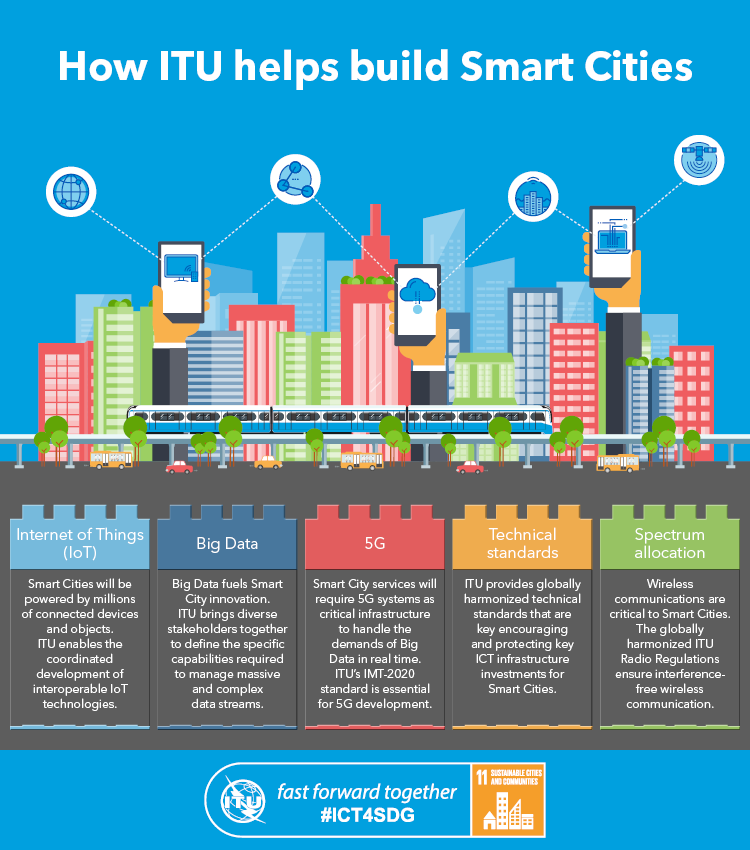



In the search for solutions to create sustainable and resilient societies, it is important to note the vital link between people and animals in many communities, whether for sustenance, livelihoods, health or security. When disasters strike, humans’ dependence on animals often means animal protection is a community priority. From protecting national parks whilst increasing local employment and food security in Malawi, to saving forest habitat for elephants in India through innovations that reduce the need for wood in local households, it is increasingly evident that engaging local communities in long-term sustainable development solutions simultaneously benefits communities.
However, despite these opportunities, our current commodification of animals for human use is creating barriers to the full implementation of the Sustainable Development Agenda. Animal production uses one-third of the world’s fresh water and 45% of the world’s grain production; drives deforestation, biodiversity loss, greenhouse gas emissions and climate change; and pollutes water, air and soil. The way we treat animals is a multi-sectoral issue, deserving the attention of the sustainable development community. Without addressing the care, protection and conservation of animals, successful implementation of the 2030 Agenda will remain out of reach.
For example, to implement SDG 6 we must reduce water pollution and increase water-use efficiency. The recent Global Land Outlook from UNCCD states that a meat-based diet uses 15 times more water than a plant-based diet. In China, animal agriculture is estimated to produce 40 times the nitrogen pollution of industrial factories, polluting water resources. Without addressing animal agriculture, we will not be able to ensure availability of water and sanitation for all.
To implement SDG 12 we must, at minimum, halve global food waste. According to the World Economic Forum, the largest loss in the food supply chain is from animal feed, amounting to a net 20% of the calories produced per person per day. We must also ensure environmentally sound management of chemicals and wastes. Beyond the food sector, the use of animals in research is a significant source of chemical and biohazardous waste resulting in air, water and soil pollution, despite the fact that non-animal alternatives are now often more reliable, cheaper, faster, and less wasteful, as well as offering better models and end results. Without replacing animal tests, meat and dairy production with humane and innovative non-animal alternatives, we will not ensure societies’ necessary transformation towards greater sustainable consumption and production patterns.
To implement SDG 15, we must halt deforestation, degradation of habitats, and loss of biodiversity. It is widely recognized that cattle production is a leading deforestation driver and a recent international conference co-hosted by Worldwide Fund for Nature and Compassion in World Farming explored the irrefutable link between animal agriculture and biodiversity loss. Without addressing animal agriculture and land use, we will not achieve SDG 15.
The closer we look, the more obvious the link between our wellbeing and the wellbeing of animals becomes. The World Organisation for Animal Health has recognized this, and there are now 181 countries which have agreed to implement animal welfare standards. Ahead of this year’s HLPF, it is imperative that we begin to address the care, protection and conservation of animals within the 2030 Agenda. World leaders, businesses and the NGO sector must recognise that taking this multi-sectoral approach, including animals in all decisions and policies related to the implementation of the 2030 Agenda, can accelerate the creation of sustainable and resilient societies worldwide.
Responding to this need is a new Animal Issues Thematic Cluster within the NGO Major Group. This Cluster brings together experts on these issues from around the world who are ready and willing to form partnerships and collaborations with stakeholders to raise awareness about the urgency of addressing the care, protection and conservation of animals to meet the goals of the 2030 agenda. Together, we can ensure the implementation of the SDGs and enjoy truly resilient and sustainable societies for the environment, people and animals.
By Jack McQuibban, Cruelty Free International; Jessica Bridgers, World Animal Net; and Bonnie Wyper, Thinking Animals United - Members of the Animal Issues Thematic Cluster of the NGO Major Group
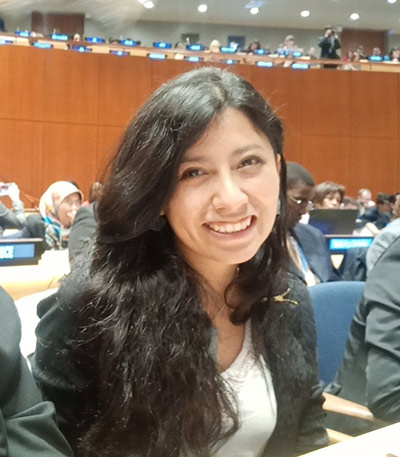
The Strategic Plan for Biodiversity 2011-2020 and its Aichi Biodiversity Targets adopted under the Convention on Biological Diversity is a ten-year framework for action by all countries and stakeholders to safeguard biodiversity and the benefits it provides to people, and the implementation of its 20 ambitious but realistic targets is on its way at the national levels. Now, the implementation of the 2030 Agenda for Sustainable Development and its Sustainable Development Goals (SDGs), agreed by the 193 States Members of the United Nations, seem to add new challenges to the development and implementation of national policies for Sustainable Development, but after a closer analysis of the full scope of these goals and targets many synergies appear.
The achievement of the SDG 15 - Protect, restore and promote sustainable use of terrestrial ecosystems, sustainably manage forests, combat desertification, and halt and reverse land degradation and halt biodiversity loss – will not be possible without taking into account the Aichi Biodiversity Targets. According to the Technical Note developed by the CBD, FAO, The World Bank, UNEP and UNDP titled Biodiversity and the 2030 Agenda for Sustainable Development, the SDG 15 is related to half of the 20 Aichi Biodiversity Targets (2, 4, 5, 7, 9, 11, 12, 14, 15 & 16).
It is easy to point out how related are the indicators of this goal with some of the Aichi Biodiversity Targets. For example, the indicator 15.1.2 - proportion of important sites for terrestrial and freshwater biodiversity that are covered by protected areas, by ecosystem type – is directly related to the Aichi Biodiversity Target 11, which seeks that by 2020, at least 17 per cent of terrestrial and inland water will be conserved through effectively and equitably managed, ecologically representative and well connected systems of protected areas and other effective area-based conservation measures. Another examples is the SDG target 15.9 - By 2020, integrate ecosystem and biodiversity values into national and local planning, development processes, poverty reduction strategies and accounts – which has the same objective as the Aichi Biodiversity Target 2, and its indicator is the progress towards national targets established in accordance with this Aichi Biodiversity Target of the Strategic Plan for Biodiversity 2011-2020.
The annual progress report of the Secretary-General on SDGs shows that despite improvements towards a sustainable management of forests and protected areas, the declining trends in land productivity, degradation, biodiversity loss, poaching and trafficking of wildlife are still concerning.
The challenges identified by countries on their Voluntary National Reviews with regards to the SDG 15 are related to habitat loss, invasive alien species, poaching and trafficking of endangered species and products, lack of expertise and knowledge on complex issues such as Access and Benefit Sharing, integration and mainstreaming of ecosystem and biodiversity conservation into sectoral plans, land degradation, threats to mountain ecosystems and pollinators, to mention some of them. All of these challenges are also addressed within the full scope of the Aichi Biodiversity targets. When it comes to implementation, the challenges that have been repeatedly identified by countries include inadequate institutional capacities and the lack of participatory coordination frameworks in land and forestry management. These are quite common in countries with small teams in charge of the implementation of multiple environmental related commitments, and will need multi-stakeholder collaboration to succeed.
Given the challenges of implementation that countries face, especially when the most biodiverse countries have also great challenges in the fight against poverty, it is essential to tackle these connected goals and targets with an integrated approach. The design of the SDGs has been done in a way that ensures that these and the Strategic Plan are mutually supportive and reinforcing, so the teams in charge of the development of national policies to ensure the achievement of this goal can be sure that their actions will support the advances on the related Biodiversity Targets.
Sources:
Synthesis of Voluntary National Reviews 2017: Division for Sustainable Development (DSD), Department of Economic and Social Affairs (DESA) United Nations
Progress towards the Sustainable Development Goals Report of the Secretary-General
Biodiversity and the 2030 Agenda for Sustainable Development. Technical Note from CBD, FAO, The World Bank, UNEP and UNDP.


The international community has, for good reason, sought to emphasize the importance of migration as a global public policy issue.
With heightened awareness of the multiple implications of poorly managed migration, and with the international community focused on developing a new global compact to address it, the opportunity for a more nuanced, more sophisticated approach to migration has presented itself.
With this has come the opportunity to better understand migration and its links with other policy issues that at first thought might seem unrelated.
Take, for example, the issue of water.
Itself an issue of great significance – owing to its centrality to sustainable development and, indeed, to life as we know it – water, and its relationship to migration is an emerging field of study that requires attention and action.
Although the links are not always straightforward, researchers have nonetheless begun to delve deeper into the issue in order to better chart the implications of these two policy domains and their intersections. It is an important part of the broader analysis of the links between migration, environment and climate change .
So, what are the links between migration and water, and what can policymakers do to take account of them?
In general, most analyses of migration and water issues focus on two separate factors. The first of these are the potential impacts of water scarcity on migration patterns. Simply put, a lack of water – whether as a result of drought, the most severe outcome of water scarcity – or other causes, is sometimes considered a factor that drives migration, in particular within countries or in some cases within regions.
However, it is often difficult to pinpoint water scarcity as being a sole, or even a direct factor, driving migration. A range of other socio-economic, political and environmental issues, acting cumulatively, are more easily identifiable as being decisive than any single factor acting alone.
Nevertheless, lack of water security does significantly increase the potential for migration, largely because of its impact on well-being and livelihoods.
Already, the World Water Development Report (WWDR) 2016 has reported that water scarcity resulting from drought and groundwater depletion has led to increased rural to urban migration in parts of the Arab region, with potential for similar movements in Africa. Water stress was also identified as one of the key driving factors in Asia as well, with research available from Iraq , Bangladesh, Maldives and Nepal .
Quantitative data from IOM’s Displacement Tracking Matrix (DTM) has similarly begun to demonstrate the migratory impacts of drought in parts of Africa. The latest drought induced displacement figures collected by DTM during 2017 estimated more than 475,000 internally displaced people (IDPs) in Ethiopia (December 2017), over 1.2 million individuals in Somalia (November 2016 - November 2017) and more than 14,000 in Madagascar (November 2017).
In addition to the current levels of migration linked to water, climate change predictions suggest that people might also be forced to move because of changes in the hydrological cycle and as a result of increasing global temperatures .
The second issue that is most commonly addressed in discussions on the migration and water nexus is the impact of migration on freshwater resources. This involves looking at both the environmental challenges of population growth attributable to migration, especially in the context of urbanization, and the environmental footprint of forced migration (displacement).
The SDGs provide several entry points to address the links between migration and water in line with the 2030 Agenda’s overall ambition of leaving no one behind. First, a number of the SDGs provide guidance to address environmental migration related to water scarcity by building resilience in the face of environmental changes and ensuring human right to water, including:
Second, the environment related Sustainable Development Goals, and especially SDG 6 on sustainable management of water and sanitation can help align migration management and governance with an environmentally sensitive approach to ensure freshwater resources are sustainably managed.
Such environmentally conscious migration policymaking and migration conscious water policymaking are key in a world in which urbanization rates keep rising, where levels of displacement are at their highest in decades and where the impacts of climate change on the water cycle have just started manifesting themselves.
Policymakers have the power to act proactively to manage migration in the context of water scarcity as well as look after freshwater resources where migration takes place. This requires working across ministries and institutional silos in the way the 2030 Agenda requires.
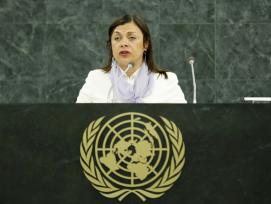
Transformation towards sustainable and resilient societies in the 21st century must consider human diversity as a key factor, whose differences are not only socio-economic. Otherwise we could face the risk of a 2030 Agenda showing very remarkable results, but with a sustainable development that does not reach all.
We must bear in mind that more than one billion persons in the world, a 15% of the world's population, present one or more types of physical, mental, intellectual or sensory impairments in the long term, which, when interacting with different barriers or obstacles, may hinder their full and effective participation in society. I am specifically referring to the persons with disabilities (UN-CRPD, 2006).
On the other hand, the advance demographic transition reveals that in the year 2017, there are 962 million persons who are 60 years of age or older, which correspond to 13 % of the world population, with an annual growth rate of 3%. It is estimated that, by the year 2030 there will be 1400 million of older persons in the world. With regard to those persons who are above 80 years old, it is estimated that it will triple in a little over 30 years (WHO, 2017).
Both sectors cannot continue to be qualified as "minorities". The latter concept is surpassed by the nomenclature of "diversity", which includes each and every one, without any kind of distinction.
Of course, both persons with disabilities as older persons, without considering their socio-economic situation, have often been only "spectators" of development. These sectors aspire to acquire their individual autonomy and their social interaction with dignity, independence and freedom.
For this reason, there is great hope that the 2030 Agenda will ensure that cities and human settlements are inclusive, safe, resilient and sustainable (SDG No.11). This does not translate only into access ramps or "special bathrooms". The challenge is greater in terms of understanding the needs of our diverse, dynamic, interacting and evolving humanity. Therefore, it is essential to make visible or highlight a goal which is not written in the Agenda, which is universal design and accessibility of cities and human settlements, not only with regard to physical space, but also in terms of information, communication, transport, technology, procedures, products and services. This also reaches out to inclusive and accessible reconstruction after a natural disaster.
Undoubtedly, the achievement of this objective is interrelated with the guarantee of access to affordable, reliable, sustainable and modern energy for all (SDG No.7). Today "smart" cities are projected, with ample technology, which feed on energy. Both for persons with disabilities, as well as for the older persons, these "achievements of modern times" should be a real horizon in their lives, which contribute to a concrete autonomy and independence, without becoming yet another barrier or obstacle for their full and effective inclusion in society.
What is the key to the correct implementation of these SDG´s?
Undoubtedly, the key will be planning, and participative and integrated management in all countries. Effective participation as an essential component for the process of the SDG´s, providing a range of reasonable adjustments, support for decision making and other forms of support for persons with disabilities and for the older persons for said participation, will strengthen the individual and collective awareness, the solidity of contemporary democracies, and ultimately the true sustainability of development.
Therefore, in order to get from the macro level to that of the individual, a goal is established; to increase significantly the availability of high-quality, timely, reliable data (Goal 17.18), for which the consideration of human diversity must be very rigorous and precise, in order to truly capture the variety of needs of persons with disabilities as well as older persons, also assessing their subsequent level of satisfaction with the implementation of the SDG´s.
At the same time, we must highlight goal 17.19 which opens horizons in order to elaborate new indicators for measuring progress on sustainable development reaching persons with disabilities as well as older persons.
To this respect, the exam performed on the HLPF countries, should go deeper into the key axis of human diversity, measuring concrete actions of "planning and participative management" with availability of reasonable adjustments and support which the persons may require. This is the only way we can truly celebrate the fulfilment of the 2030 Agenda.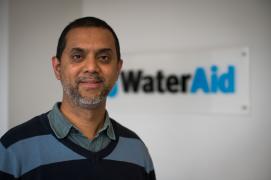
A few weeks ago, I had the privilege of visiting Ntinda Primary School in Kampala, Uganda. On reaching the school, I couldn’t fail to notice the toilet blocks at one end of the compound. They looked fresh and clean, but the headmaster showed us pictures of what they had replaced – four latrine stances, with rags and plastic hung across the stalls for privacy. The stench had been unbearable and the toilets unfit for use.
In partnership with the school, WaterAid, Kampala Capital City Authority and African Evangelistic Enterprise built two sanitation blocks and washrooms as part of menstrual hygiene management activities. Attendance subsequently went up, with children and parents feeling more comfortable with the school’s sanitation facilities.
Surely we have bigger problems?
You may ask, ‘what is the big deal about investing in provision of safe water, adequate sanitation and hygiene? Surely reaching the Sustainable Development Goals (SDGs) entails tackling more pressing issues – such as eradicating poverty, ending all forms of inequalities or developing infrastructure – than making sure people have decent toilets and safe water?’
But these basic needs – these human rights – have huge impacts on every facet of people’s lives, and we will end neither inequalities nor poverty without ensuring they are met. Living without these essentials is holding billions of people back in poverty.
An estimated 844 million people do not have access to clean water, and 31% of people do not have access basic sanitation. 35% of healthcare centres in low- and middle-income countries have no water and soap for handwashing, and 30% of schools do not have access to clean water. Each year close to 300,000 children under five die from diarrhoeal diseases caused by unsafe water and poor sanitation. WASH is a defining issue for people, prosperity and planet.
We must prioritise WASH
Without addressing the essentials of WASH, no country or government will achieve any of the SDGs. Access to clean water, decent toilets and good hygiene form an essential foundation for progress on many of the goals. This foundation is ‘mission critical’ for achieving lasting progress on health, gender equality, education, nutrition, economic prosperity and reducing inequalities within and between countries.
But, as simple and direct as it may sound, prioritising WASH has not yet had sufficient traction from political leaders, governments, donors and the private sector.
In 2010, to give governments the necessary impetus to address water and sanitation, the UN General Assembly adopted the human rights to safe water and sanitation, making them legally binding in international law. But seven years on, despite this recognition, legal obligations and political commitment in the SDGs, the crisis remains.
How to boost WASH progress
The good news is that this is a solvable issue, and solutions are at hand. As seen in Ntinda primary school, children not only attended school but also started taking new messages on hygiene, such as washing hands and using soap, back to their families. The whole community felt the benefits. Our experience at WaterAid shows that, with political will at the national level, change is possible.
To meet SDG 6, urgent action is needed on three key areas: finance, integration and sustainability. On finance, funding gaps for national WASH plans must be closed, through taxes, tariffs and transfers, with additional WASH-specific support from donors, and safeguards for people who cannot afford fees. Improved integration demands embedding of WASH across policies and programmes, ensuring multi-sectoral connections. Sustainable change requires climate-resilient services, lasting behavioural change and adaptive management that involves rights-holders.
The 2018 High Level Political Forum (HLPF) review of progress on Goal 6 should be a place for vibrant dialogue, action and accountability. In the run up to the HLPF, the UN Secretary General’s progress report on the SDGs and the UN-Water synthesis report on SDG 6, together with the HLPF-negotiated outcome document, must squarely and surely put the WASH crisis high on the political agenda, seeking urgent action.
Let governments leave no stone unturned, and act to ensure these human rights are met for all. In the words of Leonardo da Vinci, “Knowing is not enough; we must apply. Being willing is not enough; we must do.”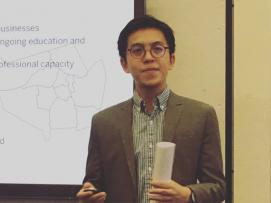
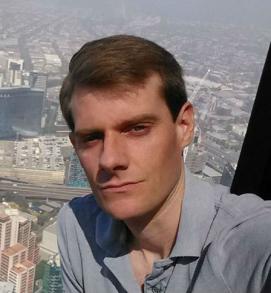
Achieving the Sustainable Development Goals (SDGs) requires evidence-based policies at both the national and local levels. The Voluntary National Reviews are crucial for measuring SDG progress, with data highlighting policy challenges and best practices. However, data collection capacities are not uniform across all Member States, raising the familiar mantra that “if we don’t count the poor, the poor don’t count.” The creation of the United Nations (UN) Inter-Agency Task Team on Science, Technology and Innovation (STI), the Technology Facilitation Mechanism, and other agency-led science and technology platforms is an encouraging sign that the UN understands the relationship between good data and development outcomes in building sustainable and resilient societies. The next step is equalizing technology capacities around the world.
Achieving the SDGs, particularly Goal 11 on sustainable human settlements, requires technologies that equip decision-makers with context-informed data. This involves both formal and informal applications that strengthen government responsiveness by helping leaders understand societal needs, identify challenges, and design effective solutions. For example, monitoring technology is generating valuable data on access to housing, transport, and public space—all of which are targets of Goal 11. Harnessing such technologies can also help public watchdogs promote accountability, support good governance, and collaborate on achieving “inclusive, safe, resilient and sustainable” cities.
The application of technology to urban planning is driven not only by the increasing relevance and convenience of applications, but also by a deeper understanding among policymakers about technology’s transformative potential. Creative and context-based adaptation of “smart city” initiatives is generating new opportunities to integrate technology with the daily lives of urban residents; this is particularly valuable in developing countries where urbanization and population growth remain stubborn challenges. The International Telecommunication Union (ITU) defines a smart city as:
“an innovative city that uses information and telecommunication technologies (ICTs) and other means to improve quality of life, efficiency of urban operation and services, and competitiveness, while ensuring that it meets the needs of present and future generations with respect to economic, social and environmental aspects.”
Vietnam provides instructive examples of the potential of smart city technologies, as the country’s population, income level, and digital penetration are representative of many developing countries. Vietnam continues to enjoy the strong economic growth prompted by the Doi Moi economic reforms of 1986, and the country’s cities are entering a new era of technology-based economic restructuring. As of 2017, nearly 20 of 63 provinces or special districts have initiated smart city pilot projects. For example, in 2015 the city of Da Nang received an IBM Smarter Cities Challenge grant to collect real-time data on bus routes and water quality.
A recent study of 10 Vietnam cities found that e-government—the use of technology-based engagement tools in public policy—can help control corruption, a practice that has long inhibited national development and poverty eradication. The study also suggests that smart city development is as much about governance as hardware. Focusing only on technology and its efficiency dividends, while ignoring the institution-building and sound strategy-making that support economic growth, fails to liberate the full potential of smart city development. Technology cannot overcome bad policy.
Many Member States are already making notable progress in smart city development. As many as 500 cities in China currently employ smart city technology in some capacity, while India’s Smart Cities Mission pledges to technologically upgrade 100 cities by 2020. In Africa, smart city development was the focus of the 2016 Transform Africa Summit, which convened 300 mayors from around the continent to discuss issues like mobile payments, public WiFi, and smart transport.
There is growing worldwide acknowledgment of the role of smart city technology in national development. When applied to SDGs, urban technologies can stimulate economic growth that “leaves no one behind.” As such, the global community must ensure that the smart city agenda is not coopted for exclusive private gain, but supports broader social goals and extends benefits to even the most vulnerable populations. Member States should accept this challenge, as the smart city concept can be instrumental in realizing sustainable and resilient societies and in achieving Agenda 2030.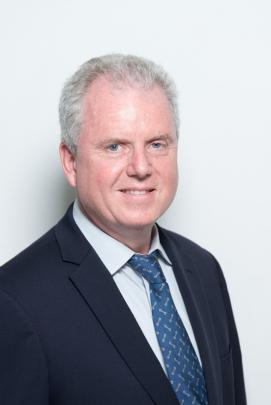
We cannot talk about economic development in Least Developed Countries without talking about agriculture. It underpins food security, employment, and exports in these countries.
Smallholder farmers that typically work on plots of land smaller than 2 hectares are the unsung heroes that make up the vast majority of the agriculture workforce. Despite limited access to markets and basic services like electricity, information, they plough through and try to make ends meet.
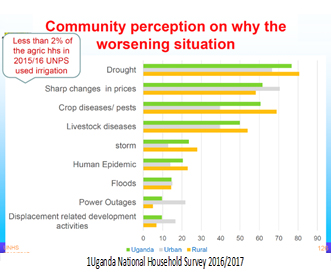 In recent times, however, farmers say living conditions have even worsened. Case in point: Uganda’s National Household Survey in 2016/2017. Farmers are faced head-on with the effects of climate change and market fluctuation.
In recent times, however, farmers say living conditions have even worsened. Case in point: Uganda’s National Household Survey in 2016/2017. Farmers are faced head-on with the effects of climate change and market fluctuation.
Technology, while not a panacea, has the potential to level the playing field for smallholder farmers. It can help improve productivity in yields, accumulate assets, access information, and more.
The technology is there. But bringing it to the last-mile is a different business proposition with unpredictable returns. For companies that are traditionally focused on quick returns, triple bottom line (social, environmental, and financial) is a nice-to-have but not a must-have. Companies that are geared towards the triple bottom line from the get-go do not get very far because capital markets prefer to invest in opportunities that have quick returns.
These companies need a nudge to see that there is tremendous opportunity to provide these products and services to smallholder farmers. Whether digital finance, solar or any other technology, smallholder farmers will pay for services if it is available, affordable, reliable and it offers them a real value proposition.
The United Nations Capital Development Fund (UNCDF), set up by the General Assembly in 1966 with a unique mandate to make investments in Least Developed Countries (LDCs), does just that. It “nudges” the private sector to go where they otherwise would not by providing de-risking capital and co-creating business models that has potential to be sustainable in the long-term.
In Uganda, Senegal, and Nepal, UNCDF works closely with a range of market actors from agriculture commodity off-takers that employ more than 150,000 smallholder farmers, large telcos, banks to fintech start-ups that incubate different ways of bringing digital financial services closer to smallholder farmers at scale. In Nepal and Uganda, we co-invest in solar companies that want to modernize farming through better irrigation, drying, and refrigeration powered by the sun.
The private sector will drive the future of off-grid solar energy and digital solutions. But like many innovations before it, public funds will play a key role in catalysing that future. Official Development Assistance (ODA) can overcome the capital gaps and invest in riskier ventures.
Benefits go beyond leveraging public funds. When asked, many companies we have invested in point out the challenge in building local partnerships or accessing and analysing data to understand market contexts. An individual company cannot solve these issues. With our existing local partnerships and pool of knowledge resources, we can provide the support needed for companies to succeed.
At the same time, UNCDF is leveraging its research and data capabilities so that we as market actors can be more data-driven in how we design and measure our product and service offerings for low-income people. For example, our year-long research on more than 500 customers of solar companies in Uganda provides insights on how people purchase and use solar solutions, thus offering insights on how companies can better market solar products to increase purchases. In Uganda, we also developed a financial inclusion dashboard that gives development partners real-time insight on the penetration and usage of mobile money in the country (at national, district and tower levels) using data records from the largest mobile network operators in Uganda. It enables UNCDF and other development partners to better identify digital penetration and usage and assess high-impact opportunities for smaller companies to focus their energy on.
Finally, our experience suggests companies need blended finance offerings – grants, loans, and guarantees - to satisfy the different growth stage of businesses. The UNCDF LDC Investment Platform is an important mechanism to meet this need by supplementing UNCDF’s grant instrument with loans and guarantees.
Never has the transformation towards sustainable and resilient societies been more possible. The technology and financing mechanisms are at our disposal. The private sector will lead the charge while ODA can act as “patient capital”. Most of all, the immediate benefits to rural communities make it a goal worth chasing.
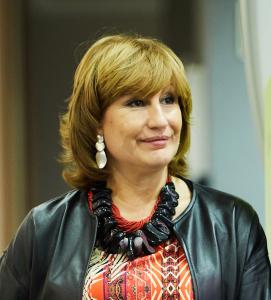
The adoption of the 2030 Agenda in 2015 and the Sustainable Development Goals (SDGs) represent an unprecedented milestone and are a feat to be proud of, as well as a defining moment of what we can do if and when we collaborate, and they represent a bold step forward from the Millennium Development Goals (MDGs), being more universal in their approach.
Proof of this universality is the adoption of SDG 11, a stand-alone urban goal, a triumph which exemplifies how the recommendations of our constituency have been acknowledged by the international community.
There is still work to do in terms of recognition and full involvement of local and regional governments, however: not just in the development of strategies to achieve the SDGs but also in reporting what has been achieved. We need to involve more spheres of government in the implementation of the 2030 Agenda if we truly aspire to make it a reality.
Localization: A silent constructive tsunami
There has been a silent constructive tsunami taking place ever since the Agenda was adopted. Local governments are not only taking ownership of the agenda but are also implementing it at the local level and, more often than not, doing so without the means they need to face such a crucial task.
Cities, provinces and regions around the world are revising their strategic plans and aligning them with the SDGs. They are organizing awareness raising workshops to share the new agenda with the population. They are training trainers in order to understand the link between what they do and what the 2030 Agenda provides.
This is why we believe that localization (taking into account local realities and communities throughout the process of implementing the SDGs) is such a key issue for local and global development alike.
In order to provide a hands-on experience on localizing the SDGs, the Global Taskforce of Local and Regional Governments, facilitated by the United Cities and Local Governments (UCLG), together with the United Nations Development Programme (UNDP) and UN-Habitat, have made a toolkit for localizing the SDGs, which has been essential in making progress towards the implementation of the global agenda.
There are three critical aspects for local governments when embracing the SDGs:
It is through democratic processes that communities can decide, together, where to target investment and action in order to achieve the best results. Political leadership is needed to bring everyone around the table, resolve potential conflicts, and coordinate action with regional and national initiatives.
HLPF 2018: a defining moment?
The hundreds of thousands of local governments around the world are organized in a century-old movement composed of associations with representation at the national, regional and global levels. These associations hold now the key to ensure knowledges and practices are shared but also to guarantee that the voices of local leaders are heard internationally, especially in venues such as the High Level Political Forum (HLPF) where last year local and regional governments presented the report “National and sub-national governments on the way towards the localization of the SDGs”, available here.
Local and regional governments’ networks are also essential in developing partnerships with other organizations which can effectively ensure the achievement of SDGs. This is why have continuously supported the Local2030 Hub and find it instrumental to have a place where all UN Agencies discuss action at local level with other stakeholders.
We hope 2018 will be a defining moment for both the visualization and resourcing of localization. For the first time, the High Level Political Forum will count with a Local and Regional Governments Forum. A delegation of around 100 mayors and local governments’ representatives are expected to attend and share their vision of the progress made and the kind of actions needed to achieve the joint expectations.
Addressing the global housing crisis, defining new governance mechanisms, enhancing support to those most vulnerable -especially in view of climate change-, bridging inequalities and redefining development finance will be some of the key aspects brought to the table. We are eager to prove that local governments hold the key that unlocks the global challenges, and that we have arrived at the HLPF to stay.

The United Nations’ third annual Forum on Science, Technology and Innovation for the Sustainable Development Goals, or “STI Forum”, is coming up on 5-6 June 2018 at United Nations Headquarters in New York. The STI Forum is a concrete and action-oriented forum, where various stakeholders, including representatives from governments, industry and civil society, scientists, innovators, and entrepreneurs, can all come together to discuss how to promote the use of science, technology and innovation (STI) as tools to achieve the Sustainable Development Goals (SDGs). Six goals out of the 17 SDGs, along with other relevant topics, will be on the agenda this year, these goals are: clean water and sanitation (SDG #6), affordable and clean energy (#7), sustainable cities and communities (#11), responsible consumption and production (#12), life on land (#15), and partnerships for the goals (#17). Other topics include a chronological plan (“STI Roadmaps”) to guide the efforts of different stakeholders, and the impact of rapid technological change in science and technology on society and the economy. The Forum will also provide an opportunity to introduce innovators and entrepreneurs to funders interested in financing ideas that will have positive impacts toward sustainable development, and governments looking for innovative policy solutions.
Why STI?
The SDGs, adopted by the United Nations in 2015, are a global plan which aims to end all forms of poverty, reduce inequality, cope with climate change, build a sustainable society by the year 2030, and “Leave No One Behind”. Science, technology and innovation are indispensable means for providing solutions to the challenges facing the world today while making the best use of limited resources in order to achieve these goals.
Let me give an example. Today, approximately 20% of the world’s population does not have access to electricity. In many places, people rely on firewood and kerosene lamps for lighting. Now, efforts are being made to provide a solution in such places using science and technology; under one such project, solar panels are being placed at kiosks in local communities, from which people can borrow bright, energy-efficient, and long-lasting LED lanterns charged with solar electricity. Thanks to these lanterns, children can now study at home after school, families can make longer use of night time hours, people can reduce the burden of securing firewood, and even have chance to start new local businesses in their villages. The power of science and technology has brought these people better and “brighter” lives.
STI can thus be useful for achieving the SDGs. At the same time, the benefits of science and technology must be for everyone, not just for some. The guiding principle of the SDGs is to “Leave No One Behind", and this principle applies to the utilization of STI as well. Furthermore, it is necessary to pay attention to inter-linkages such as synergies and trade-offs between respective SDGs. Regarding these inter-linkages, the International Council for Science (ICSU) outlined key interactions between the areas of food security (SDG #2), health (#3), energy (#7), and the oceans (#14) along with other goals in its 2017 report.
The Importance of Roadmaps
For the sake of efficiency, stakeholders should avoid implementing their SDGs-related measures sporadically and without coordination. If, on the other hand, they work together towards common objectives based on STI roadmaps, they can share their progress and achievements, thereby making their efforts more systematic. Discussions on these roadmaps will take place at the STI Forum. Let us hope for good progress.
Making STI a Real "Deciding Factor"
“STI for the SDGs" is not yet a concept familiar to many people. We should endeavor to develop this into a global effort. Japan, for its part, advocates a human-centered approach to leveraging STI to solve various social challenges, which it calls “Society 5.0”. Though STI has always played an important role in social innovation, it is the power of people, when they are empowered and supported to fully realize their potential, which makes innovation possible. I am, together with my co-chair from Mexico, committed to bringing the upcoming STI Forum to a success and realizing a world that will truly "Leave No One Behind".
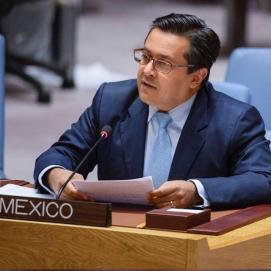
Unlike other periods of great transformation, today’s main global trends are linked to innovative and emerging technologies that are having an immediate and deep impact, bringing both opportunities and challenges to the way we live but mainly to the way we are planning as nation and regions to achieve the Sustainable Development Goals. The next Third Multi-stakeholder Forum on science, technology and innovation for the sustainable development Goals (III STI Forum) to be held at the UN headquarters on June 5-6, co-chaired by Mexico alongside with Japan, will be surrounded by events starting on the 4th of June and continuing on the 7th of June that will bring us the opportunity to learn from a series of multi-stakeholder conversations and discover, understand, and learn about faster and more efficient technological tools to achieve sustainable and resilient societies by 2030. Many of the events will take place for the first time across the week!
Who is invited?
As a main engine of this momentum, the 2030 Agenda not only represents a paradigm shift to approach development universally by providing an overarching framework that sets out the objectives and concrete targets required to tackle our main global challenges. It also launched in 2015, together with the Addis Ababa Action Agenda, the Technology Facilitation Mechanism which includes the STI Forum as one of its main pillars. This yearly opportunity to connect platforms of innovators, enterprises and start-ups, scientists and academy, governments at all levels, women and youth, and the whole of the UN development agencies, will have its third edition next week in order to find ways and tools to improve their livelihoods.
A look into the future
Among the main issues of our discussions, Mexico has put forward as a main issue the review of the impact of rapid technological change on the SDG’s. An issue that has increasingly caught the attention of leaders all over the world and that has become the fourth priority of Secretary General Guterres. We believe that more understanding and partnerships are needed to grasp the opportunities of the latest technological developments, such as AI, robotics, bio and neuro-engineering, new materials, blockchain, geo-engineering, virtual and augmented reality technologies, among others. We have identified how these technologies are all connected and complement one another, having a direct impact on the way we all live.
Other practical technological solutions
The STI Forum will also bring successful local technological developments that can be replied and will recognize 10 young innovators for their outstanding work. Other sessions will focus on capacity building for STI national planning and will benefit from the participation of 10 newly elected eminent experts, while special sessions will be dedicated to spurring the implementation of SDGs 6, 7, 11, 12, 15 and 17, through the fulfillment of its targets through science, technology and innovation. Recommendations on public policies will be a wanted and concrete result of the Forum, which will be reflected in our co-chairs Summary Report.
Expected outcomes
Furthermore, being Mexico together with Japan co-chairs of the following STI Forum for 2019, our job will be to keep open the STI doors for youth and all stakeholders and review as well, after four editions, how we can leverage development through science and sustainable technology and innovation.
It is time to create strong multilateral alliances based on human centered innovations and make the Agenda 2030 a reality, not leaving anyone behind.
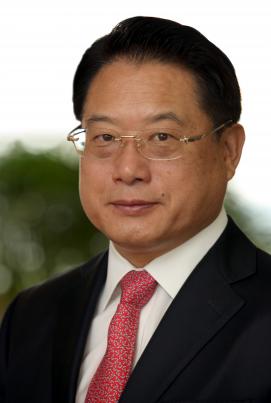
At the core of the mandate of the United Nations Industrial Development Organization (UNIDO) to promote and accelerate inclusive and sustainable industrial development is growth within an environmentally sustainable framework. Thus, we must decouple industrial activities from negative environmental impacts and natural resource use.
In line with the Agenda 2030 principle of “leave no one behind”, we must promote equal opportunities and an equitable distribution of the benefits of industrialization to all countries, all people, and all parts of society.
In line with the Agenda 2030 principle of “leave no one behind”, we must promote equal opportunities and an equitable distribution of the benefits of industrialization to all countries, all people, and all parts of society.
Against this backdrop, the achievement of the Sustainable Development Goals (SDGs) 7, 11, 12 and 17 is vital for the achievement of inclusive and sustainable industrial development which lies at the heart of SDG 9 – and vice versa. While much progress has been made in implementing the SDGs, we still need to intensify efforts to promote sustainable industrial development, provide clean and affordable energy for all, develop solutions for sustainable and thriving cities, and reduce the environmental footprint of production and consumption.
The creation of sustainable and resilient societies is inextricably linked with industrial development. This interlinking is especially pertinent in relation to SDG 7.
The Intergovernmental Panel on Climate Change (IPCC) projects that unless there is a dramatic switch from current practices, greenhouse gas emissions from industry will increase by somewhere between 50 to 150 percent by 2050. At the same time, industry is an important driver in the development of technical solutions and business models in the field of renewable energies and other clean technologies that support the implementation of SDG 7.
In May 2018, UNIDO and its partners convened a special session of the Vienna Energy Forum which brought together over 430 experts and activists. They discussed SDG 7 and generated inputs ahead of the High-Level Political Forum on Sustainable Development (HLPF).
It has been emphasized that there are three emerging mega-trends shaping today’s energy landscape: decarbonization, digitization and decentralization. In this context, we must:
dramatically reduce the greenhouse gas emissions from industry by increasing energy efficiency and switching from fossil fuels to alternatives;
use modern information and communication technologies (ICTs) and digital technologies to efficiently manage energy systems that have large shares of renewables and depend on multiple renewable energy producers;
move towards decentralized energy systems which entail decentralized energy generation and storage, as well as community involvement.
The advent of new climate technologies and the urgent need to move towards a low-carbon development path is driving the growth of new green industrial sectors, creating new jobs and new opportunities. But entrepreneurs and start-ups in developing countries need support so that they can develop innovations and take their place on the global market. Therefore, to empower and catalyze entrepreneurial eco-systems for climate innovation in developing countries, we must urgently:
support innovation and entrepreneurship, particularly for small and medium-sized enterprises;
ensure equal and equitable access to and control over sustainable energy services for women and men;
make technology transfers to developing countries and emerging economies more effective by sharing knowledge, developing capacity in energy-related projects, and fostering robust science, technology and innovation policy frameworks.
In order to ensure vital partnerships between government, the private sector, industry and academia to support the integration and application of clean technologies, we have to:
support local innovation hubs for clean technologies;
work with city administrations to support the retrofit of existing industries and the implementation of innovative digital technologies and policies;
introduce funding options to enable investment for low-carbon infrastructure and the deployment of leap-frogging technologies;
If we can take these steps, which are instrumental to increasing access to affordable, reliable and modern energy for all and to accelerating inclusive and sustainable industrial development, then we will be well on the way to establishing sustainable and resilient societies.
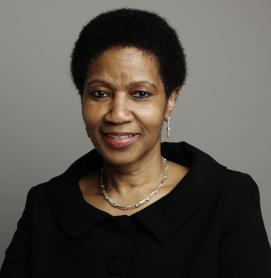
The transformation to sustainable and resilient societies can only happen when every woman and girl is afforded the same rights and opportunities as men and boys. But, across countries, the reality is one of deeply rooted gender bias, which compromises the principle of equality and human progress through dignity and respect for our planet, which are the bedrock of sustainable development.
As UN Women’s recent report “Turning promises into action: Gender equality in the 2030 Agenda” shows gender inequalities remain pervasive across all dimensions of sustainable development, including SDGs 6, 7, 11,12, 15 and 17, which are the focus of this year’s HLPF:
As we turn to HLPF 2018, let’s not forget that transformation toward sustainable and resilient societies will only be possible when gender perspectives are part and parcel of every assessment of every goal, and all decision-making related to their planning and implementation; and when women and girls fully enjoy all their human rights.
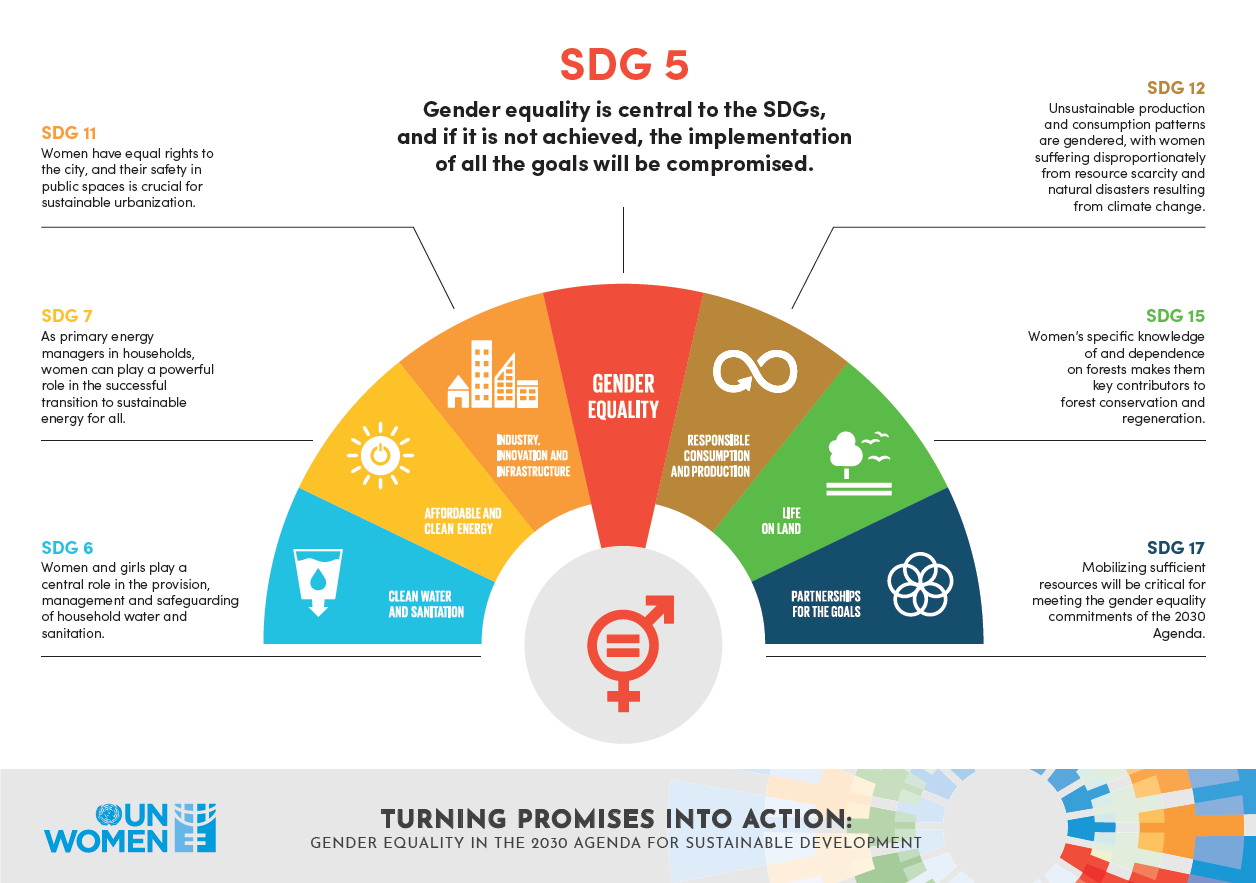
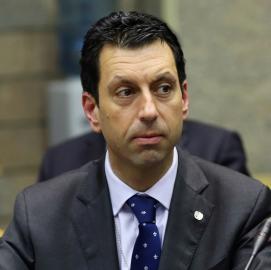
Three years into the implementation period of the 2030 Agenda for Sustainable Development, is Asia Pacific on track to meet the Sustainable Development Goals (SDGs)? According to ESCAP’s recent Asia and the Pacific SDG Progress Report, the answer is yes for only one Goal, unlikely for many Goals, and probably not for a few Goals where the region is moving in the wrong direction, most notably on inequality. While there are major variations across the vast Asia Pacific region, between and within countries, the overall trajectories are clear and point to areas where urgent action is needed.
ESCAP’s analysis shows that inequalities are widening in terms of income and wealth, opportunity and access to services. Income inequalities grew in almost 40 per cent of all countries. Large disparities exist in access to education, bank accounts, clean fuels and basic sanitation. Poor and disadvantaged groups are disproportionally impacted by environmental degradation, including diseases from air pollution and natural disasters. Inequalities in income and lack of employment opportunities, along with poverty, landlessness, and vulnerability to natural disasters and climate change, all heighten the risk of extremism and conflicts that could unravel development gains in Asia Pacific.
This is a concern as disaster risk is outpacing efforts to build resilience in Asia Pacific. A person living in the Asia Pacific region is five times more likely to be affected by natural disasters than a person living in any other region. Poor people are disproportionately affected by such disasters: between 2000 and 2015 the low and lower middle-income countries experienced by far the most disaster deaths. Extreme weather events, including slow onset disasters such as drought, are undermining food security. They can lead to hunger among the most vulnerable, particularly those in rural areas working in agriculture. Yet disasters also widen inequalities in urban areas. Climate change will continue to magnify and reshape the risk of disasters and increase their costs. As a result, risk governance needs to be strengthened, investments in disaster risk reduction increased and the fiscal burden of disasters better managed to avoid a disproportionate impact on the poor and vulnerable. With over half of global GHG emissions coming from Asia Pacific, countries in the region also face the considerable challenge of decarbonization.
However, the necessary energy transformation in Asia Pacific is still in an early stage. Progress on achieving SDG 7 is insufficient. Major gaps remain between current trajectories and what is needed to meet SDG targets and wider aspirations from the Paris Agreement on climate change. While access to electricity has reached 90%, up from 70% in 1990 at a time of major population growth, the progress in access to clean cooking fuels has been slow. The significant growth in renewable energy has been outpaced by growth in energy demand and fossil fuel use. There are signs the region has begun to decouple energy use and gross domestic product, an important step for energy efficiency, but again progress is too slow to meet energy efficiency targets under SDG 7. The energy transition pathways to 2030 will require full alignment of national energy policies with SDG 7, the development of national energy transition roadmaps, a quantum leap in the financing of sustainable energy, especially from the private sector, and the rapid phase out of fossil fuel subsidies. Over the past few decades, Asia Pacific has succeeded in dramatically reducing poverty, increasing levels of education, extending life expectancy and building fast growing and resilient economies that have largely weathered the global financial crisis. The region is at the forefront of many technological developments that will shape the future of manufacturing, work and daily lives.
But leaving no one behind will require re-aligning investments to deliver the 2030 Agenda and targeted policies for the most vulnerable. This includes addressing the challenges of population ageing in Asia Pacific, where one in four people will be 60 years or older by 2050. It also includes building disability inclusive societies for over 600 million people with disabilities, to address their disproportionate rate of poverty, remove barriers to education and work, and enable their full and effective participation in decision-making processes. It calls for achieving safe, orderly and regular migration to address the challenges faced by over 60 million international migrants in the Asia Pacific region. It requires investment in building resilience and in promoting innovation. And it demands eliminating gender disparities, closing gender gaps and investing in women, including by promoting women’s entrepreneurship.
What ESCAP’s work over the past year has shown is that the region has not yet put in place the policies that will drive the transformative change needed to deliver on the Regional Road Map for Implementing the 2030 Agenda for Sustainable Development in Asia and the Pacific. Recent history has demonstrated the region has everything it takes to change course. Whether this will happen soon enough and fast enough to achieve the SDGs remains an open question.
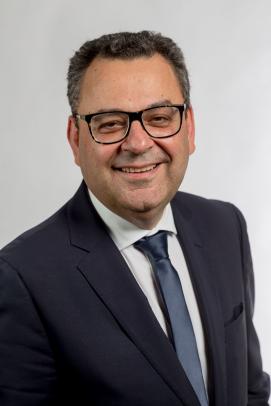
Building on the progress made in the quest to meet the Millennium Development Goals (MDGs), the United Nations’ General Assembly adopted in October 2015 the 2030 Agenda, a concrete action plan which sets the course towards a more sustainable planet. Based on 17 Sustainable Development Goals (SDGs) and associated targets, such an ambitious destination is to be reached only if the journey is shared by a committed world community.
Indeed, the active collaboration of both the private sector and civil society, including the public transport sector, alongside governments and administration, needs to be encouraged to create more resilient and sustainable societies through the SDGs. The High-Level political forum on sustainable development, held in New York in mid-July this year, will review some of these goals in depth.
Among those goals, the 11.2, aims specifically at ‘providing access to safe, affordable, accessible and sustainable transport systems for all, notably by expanding public transport’. This is one of the main challenges our cities have faced in recent years. For too long our urban areas were built to facilitate the use of private cars as the main mode of transport, not taking into account the impacts it could have on citizens and their environment.
Urban dwellers are the first to suffer the consequences of this outdated car-first mentality. It was recently confirmed in a World Health Organisation report that more than 80% of people living in cities are breathing polluted air. As it produces 18% of all man-made emissions with a large part taking place in cities at a growing pace, the transport sector is no stranger to this deterioration of urban environments.
Leading the transition
Urban mobility is at a crossroads. Decision makers can no longer envision the future of transport the way it has been up until a few years ago, prioritising private car ownership over collective, accessible and inclusive transportation. Governments of all levels are coming to the conclusion that the modal share of transport has to be positively inclined towards public transport, walking and cycling if we are to succeed in creating more resilient and sustainable cities.
Citizens need mobility champions to rise to the challenges. As the only network to bring together all sustainable transport modes, the International Association of Public Transport (UITP) has set up a new platform, in collaboration with United Cities and Local Governments (UCLG), to support local decision makers in adopting and developing more sustainable transport systems. Inspired by the UITP Declaration on Climate Leadership, the Mobility Champions Community is building on the best practices in terms of deployment of clean vehicles, increased public transport supply, combined and active mobility, as well as energy efficiency to help leaders adopt policies that will bring us ever closer to reaching the SDGs.
Concrete solutions exist and the public transport actors are leading the charge to implement them in their daily activities. In fact, operators, manufacturers and authorities have been at the forefront of sustainable and accessible urban mobility for decades now.
The 2030 Agenda emphasises the importance for all the different stakeholders to be involved in the process. After all, we are sharing the same ride in a long collective journey during which only boldness can help us each time get closer to reaching our targets.
This foresight has driven public transport actors to always push the boundaries of innovation, striving to be more efficient, inclusive and accessible. Whether it was to develop new technologies or help configure new planning, our industry has been a leader in advancing towards more sustainable mobility and the way it is embracing the new digital revolution indicates that the best is still yet to come.
The time has come to take bold measures leading the transition to more accessible zero-emission mobility solutions for all. It has already begun in many cities and regions, but more needs to be done to offer all populations transport solutions that will meet their expectations and needs.
The HLPF 2018 will provide a unique opportunity for all stakeholders to join their expertise, knowledge and determination to review successes, challenges and lessons learned on the journey to achieving the SDGs. The road might be long before 2030, but the commitment of world leaders is needed and they can count on the engagement of public transport actors to help them drive the changes needed to create more sustainable and resilient cities.
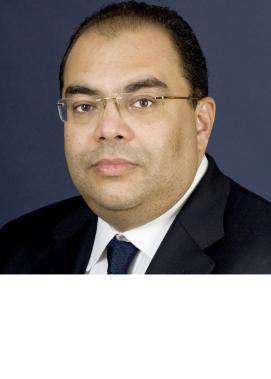

Water touches nearly every aspect of development. It flows through and connects the 17 Sustainable Development Goals (SDGs) by driving economic growth, supporting healthy ecosystems, cultivating food and energy production, and ensuring access to sanitation. We cannot achieve the SDGs without our collective action on water.
Yet today water represents a silent emergency and a risk to our goals of building shared economic progress and sustainable development. The challenges include gaps in access to water supply and sanitation driven by growing populations and rapid urbanization, more water-intensive patterns of growth, increasing rainfall variability, and pollution, among others. The forthcoming SDG 6 Synthesis Report on Water and Sanitation captures the current situation rather succinctly: “the world is not on track” to achieve our water goals embedded in SDG6.
Billions of people around the world still lack safe water, sanitation and handwashing facilities. An increase in wastewater in many parts of the world is affecting quality. National governance structures remain weak and fragmented. Rapid urbanization has put enormous stress on agricultural production and water supply. Financing remains insufficient and data gaps in monitoring are abundant.
The World Bank Group is working with our country partners in a number of ways to address these challenges and ensure that water is used wisely to help achieve the SDGs and a water-secure world for all.
First, the Bank Group has financing and technical expertise. With a portfolio of water investments of around $37 billion, it is the largest multilateral source of financing for water in developing countries. Water projects are inherently cross-cutting, with around 70 percent of lending for services such as water supply and sanitation and irrigation, and the remaining 30 percent mapped to our urban and rural practice, our agriculture practice, and others. And there is great demand for our services - according to World Bank data, the sector requires six times more financing than currently available from government, the private sector, and donors. In other words, to meet the ambition of SDG 6, blended finance needs to be scaled up to meet the global challenge.
Second, the Bank Group brings its experience on data to the table. We work closely with other members of the UN family, such as UNICEF and WHO, on the Joint Monitoring Program, the custodian agency for SDG indicators 6.1 (drinking water) and 6.2 (sanitation and hygiene). We are aligning our data collection efforts for compliance with these SDG indicator definitions. We are also committed to strengthening the results indicators in our lending operations to go beyond access, and instead track service delivery outcomes such as adequacy, reliability, quality, and affordability. Given the country-driven approach of our operations, this means we need to continue strengthening country capacity to collect the data required to measure the SDGs.
Third, we use our convening power to bring stakeholders together. In 2016, the highest level of government leadership—11 heads of state and a special advisor that make up the High-Level Panel on Water (HLPW) —was convened by the World Bank Group President and UN Secretary General to identify a sustainable path forward for water. For the past two years, the HLPW engaged in robust study and analysis to solve the challenge of ensuring the availability and sustainability of water. The Bank Group was closely involved in the entire process, providing both intellectual leadership and logistical support to the HLPW.
The Panel’s report Making Every Drop Count: An Agenda for Water Action was presented to the UN Secretary General in March this year. It calls for a fundamental shift in how the world understands, values, and manages water. Perhaps the Panel’s biggest legacy is how it will continue to leverage the high-level partnerships forged in the areas of investment, innovation, water scarcity, valuing water, and a number of new Bank-funded programs in our client countries addressing the broader resilience agenda. In addition, in March on World Water Day this year, the UN launched the International Decade for Action: Water for Sustainable Development. This Decade for Action calls for all to take action to address our water challenges within this decade.
As we prepare for the upcoming UN High Level Political Forum and the first global review of SDG 6, we also need to identify water’s important interlinkages to the rest of the SDG agenda. Water is managed as a critical resource for development to support agriculture, manufacturing, job creation, and the environment. Investing in effective and sustainable water solutions should enable universal access to sanitation and water, promote water security, and build resilient societies, and will contribute to the Bank Group’s twin goals of ending extreme poverty and promoting shared prosperity.
A recent Bank Group report Reducing Inequalities in Water Supply, Sanitation, and Hygiene in the Era of the SDGs suggests that a drastic change is required in the way countries manage resources and provide key services, starting with improved targeting to ensure they reach those most in need. The report sheds light on major disparities in water supply and sanitation services between rural and urban, poor and non-poor areas, with direct implications on SDG 10 (inequalities) and SDG 1 (poverty). Another report, The Rising Tide, provides policymakers and practitioners with a new framework for thinking about the intersection between water and gender (SDG 5). And issues surrounding universal electrification (SDG 7); rapid urbanization; and agricultural production all illustrated the multifaceted nature of water and its values.
Drought-related crises can even ripple through generations. A recent Bank Group report titled Uncharted Waters found that children in Africa who experience droughts in their infancy receive less food in the critical first 1,000 days of life. This deprivation can result in a phenomenon called stunting, which prevents children from reaching their full cognitive or physical potential. These children drop out of school earlier, have less wealth, and their own children are more likely to be stunted, perpetuating a vicious cycle of poverty and ill-health.
It is important to recognize and respond to the various values that societies attach to water and its uses. We are occasionally prone to making presumptions in development about the availability of water for a variety of critical purposes, but such presumptions become more tenuous with each passing year. The global community must treat water as a global public good, for which we have collective responsibility – and share common benefits and risks – to preserve this precious resource for generations to come. The shape of our future depends upon it.

As a professional swimmer, my life and career are inseparably linked to water. Without water, I would not be alive; without water, I would not be where I am today.
Water is the source of life on our Blue Planet. Water resources, and the range of services they provide, underpin poverty eradication, economic growth, and environmental sustainability. From food and energy security to human and environmental health, water contributes to improvements in social well-being and inclusive growth. The livelihoods of billions depend on it.
While water is so vitally important to our life, approximately two thirds of the global population live in areas that experience water scarcity for at least one month a year. Inadequate sanitation facilities remain a reality for one third of the world’s population.
The global average water footprint per year per capita is 1,240 cubic metres (1,240,000 litres). That is almost as much as half of the water needed to fill an Olympic swimming pool. But many of the other facts and figures concerning water use are not widely known. For example, the production of one kilogramme of beef requires approximately 15,000 litres of water and to make one pair of jeans, 8,000 litres of water is consumed1. In other words, we are unsustainably consuming the most important resource on Earth, without even realizing it!
Ensuring there is sufficient and safe water supply for everyone is becoming increasingly challenging worldwide. Continuous population growth, rapid economic development and accelerated urbanization pose great challenges to water supply and food security.
China’s population is expected to peak around 2030 at 1.45 billion. These people will need to be supplied with safe drinking water and sanitation services, as well as food and other agricultural products.
Great efforts have been made in China to ensure adequate water and sanitation services to meet people’s needs. For example, to address water shortages and improve the quality of water available to indigent mothers and their families, China Women’s Development Fund (CWDF) launched a special project, "With Love From Earth, Water Cellars for Mothers", in 2000, to raise funds and build strong and durable water cellars. Millions of people have benefited from the project.
The “Campus Safe Drinking Water Program”, under the Water Cellars for Mothers Project, was launched in 2011. The program now covers 769 rural schools, providing safe drinking water for close to 400,000 faculty staff and students2.
Goal 6 of the Sustainable Development Goals adopted by world leaders at the United Nations in 2015 offers a great opportunity for concerted action by the international community to tackle the growing global water crisis. The Goal aims to ensure the availability and sustainable management of water and sanitation for all.
The implementation of Goal 6 is also linked with the achievement of other SDGs, such as Goal 14, “Conserve and sustainably use the oceans, seas and marine resources for sustainable development”. The water we pollute will end up in the oceans and seas, causing marine pollution.
Going forward, we must recognize the impacts of what we do on water resources, and act without delay. The choice is ours. We must switch to a more sustainable pattern of consumption, support products that are environmentally friendly, and reduce anthropogenic pollution.
Only through such actions can we promote the sustainable use of water resources in a tangible manner, minimize pollution, and help more people overcome water scarcity.
In this context, I would like to make an appeal: Join me in raising awareness and taking action, to make Goal 6 on water and sanitation a reality. The International Decade for Action – Water for Sustainable Development 2018-2028 is an opportunity we cannot afford to miss. Let’s work together to secure development opportunities and human dignity for all of us, and for future generations.
Instagram
Twitter
Facebook
Weibo
1 http://waterfootprint.org/en/water-footprint/national-water-footprint/
2 www.news.cn, 03-22-2018

How can we create sustainable and resilient societies? Health, undeniably, plays a foundational role. Good health allows children to learn and adults to earn; it helps people escape from poverty; it addresses social and gender inequities and provides the basis for wellbeing, social cohesion, health security and long-term economic development.
The Sustainable Development Goals (SDGs) set a broad and ambitious agenda for a safer, fairer and healthier world with no one left behind. Achieving universal health coverage (UHC) by 2030 is a core driver to promote physical and mental health and well-being, and will also support the achievement of health-related SDGs.
UHC means that all people and communities have access to needed quality health services without risk of financial hardship. To achieve UHC, we must effectively strengthen health systems to make them sustainable and resilient. UHC also means building progressive pathways that endeavor to first reach the most vulnerable and marginalized populations to ensure no one is left behind. Countries that make progress towards UHC will also make progress towards other health-related targets across different sectors and towards all the SDGs.
Sustainable and resilient health systems matter for society. By resilience, we mean the capacity of actors, institutions and populations to prepare for and respond to health crises.
The worldwide resurgence of dengue fever, the global spread of multidrug-resistant tuberculosis (MDR-TB), and recent outbreaks of Ebola, Middle East Respiratory Syndrome, avian influenza, and the Zika virus have shown how epidemics can spread rapidly in the absence of strong responsive and resilient health systems. No nation is immune to the growing global threat that can be posed by an isolated outbreak of infectious disease in a seemingly remote part of the world. However, with strong health systems countries are better able to prevent, detect, and respond effectively to these crises, thus dramatically reducing the loss of life, community disruption, and economic costs of such events.
UHC is an ambitious target, with its own set of challenges. Fragmentation of efforts by a range of actors and the financing of health are both key issues to address. In order to achieve UHC, we must build resilient health systems that are funded primarily by public finance, and based on primary health care. They must deliver integrated, comprehensive people-centred and quality health services for all, while taking necessary measures to protect households from financial hazards due to health expenditures.
These efforts should be led by national governments, in support of national health policies and plans, building on and strengthening existing sector-wide processes to avoid fragmentation but with the collaboration of other country and global health stakeholders. The progressive realisation of the right to health through UHC is primarily a national responsibility, but can be assisted through regional and global solidarity, exchange and international cooperation.
Under the auspices of UHC2030, there are new opportunities to reach out and draw in all the actors that need to be on board. UHC2030 is a movement to strengthen health systems for UHC. A range of partners including governments in low-, middle- and high-income countries, development partners, civil society organisations, media and the private sector are coalescing around a set of key principles to guide their action in prioritising and implementing health systems strengthening. These principles identified by the UHC2030 global compact for progress towards universal health coverage are:
UHC2030’s approach promotes policy dialogue between the government health sector authorities and all people, to ensure multi-stakeholder and multi-sectoral actions in health system strengthening at global, regional and country levels. The commitment and actions of our partners injects new political energy into the growing global movement for UHC and as we forge new relationships, allegiances and networks, we find we are stronger together to reach our goal.
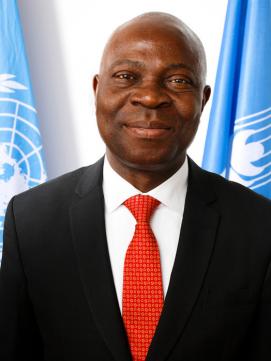
When a human baby is born, 75 per cent of its body mass is water. We are made of water and, like all living creatures on our planet, we would wither and die without it.
Today, more than 2 billion people lack access to safely managed water services. Around 4.5 billion children, women and men live without safely managed sanitation services. As a result, it is estimated that more than 340,000 children die every year.
The world’s ecosystems, economies, energy and human settlements – all are at risk if we fail to achieve SDG 6: water and sanitation for all by 2030.
Here are three ways that progress on SDG 6 will drive progress in energy (SDG 7), cities (SDG 11), sustainable consumption and production (SDG 12), and protecting life on land (SDG 15).
The global urban population is set to grow from around 4 billion today to over 7 billion by 2050 (UNESCO 2012).
The ancient city of Rome was able to sustain a population of around 1 million people in 1 AD largely because its citizens had access to water that was kept separate from a large-scale sewer system. But as we know all too well, when people live without safe, affordable, reliable water supply and sanitation, the consequences are devastating.
If towns and cities of the future are to be inclusive, safe, and sustainable, their inhabitants need safe drinking water and sanitation. This is not only a social good; investing in safe water also offers economic opportunities. For example, the introduction of innovative and affordable water technologies can create employment in new services and industries.
Today, an ever-increasing and more affluent global population is demanding an ever-increasing amount of stuff. Manufacturing requires water, from around 2,500 litres to make a cotton t-shirt to around 12,000 for a smart phone. And because of the way we produce energy, roughly 75% of all industrial water withdrawals are used for energy production (UNESCO, 2014). There will need to be much more support for the development of less water-intensive renewable energy, such as hydropower and wind.
Agriculture is a major consumer of water. The safe reuse of wastewater – for agricultural irrigation, municipal purposes, industrial washing and cooling etc – can help us create more circular, sustainable production and consumption patterns. Also, improved sanitation systems and treatment plants can generate fertilizer from human and animal waste that could be used in farming or turned into biofuels.
Water’s journey begins and ends in nature. So, any threat to the source of all our water is a mortal threat to human health.
Globally, over 890 million people practise open defecation, and more than 80% of wastewater flows back into the environment without being treated or reused.
In addition there is the growing issue of the degradation of our natural environment. At a time when climate change is resulting in more extreme weather events and disasters, we cannot afford to further degrade our environment. As things stand, the number of people at risk from floods is projected to rise from 1.2 billion today to around 1.6 billion in 2050.
One way to protect life and water supply is to harness nature itself – restoring forests, grasslands and natural wetlands, reconnecting rivers to floodplains, creating buffers of vegetation along water courses.
These nature-based solutions are not a panacea but, alongside human-made water and sanitation infrastructure, they can help us live in harmony with the ecosystems that literally keep us alive.
As we look ahead to 2030, the much-talked-about 4th industrial revolution offers opportunities never seen before in our sector, such as blockchain-based technologies that can improve water use in agriculture; the ‘Internet of Things’ that will enable more connections and a greater exchange data; and satellite images that can help us track the quality of our ecosystems and implement strategies to reduce the risk of disaster.
New technologies will be essential in creating positive and sustainable relationships between seemingly disparate areas – such as economies, energy, human settlements and ecosystems – to allow for a more sustainable future.
Underlying the apparent intricacies of the 2030 Agenda is one simple truth, underscored by SDG 6, that every person on our planet will always need water and sanitation to survive and thrive.
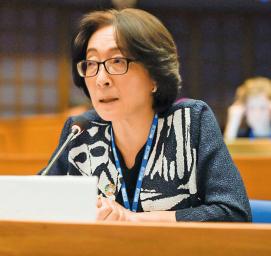
If there was a SDG18 it might well coalesce around the concept of ‘Resilience for All.’
As it is, the concept of resilience is fundamental to achieving all of the SDGs, seeking as they do to strengthen people’s ability to survive, cope and thrive on this planet.
Over the last couple of months, I have met and heard from politicians and civil society representatives from over 100 countries meeting in regional platforms for disaster risk reduction in the Americas, Europe and Asia.
All take the Sendai Framework for Disaster Risk Reduction 2015-2030 as their manifesto, providing guidance and a gateway towards coping with a world where inclusion is under threat, disaster displacement is an everyday occurrence, urbanization is proceeding at breakneck speed and the earth’s resources are being used up at an alarming rate.
Building ‘resilience for all’ seems to be the underlying theme, be it for the most vulnerable people, the displaced, or for those affected by rapid urbanization which ignores the principles of good land use and safe building codes.
We have had wide-ranging discussions on subjects as diverse as resilient infrastructure, the role of eco-systems, the protection of livestock, accessibility to multi-hazard early warning systems, public-private cooperation and working with informal settlements.
A key issue that surfaces time and again is concern over disaster displacement. This is now a chronic issue which needs to be addressed if we are to make progress on making cities and human settlements inclusive, safe, resilient and sustainable as SDG 11 calls for.
Just in the last week, my own country Japan has had to cope with the most extensive disaster event since the Great East Japan Earthquake and Tsunami in 2011. The floods and landslides have caused over 200 deaths or missing, great disruption to normal life and highlighted once more how even the best disaster-prepared countries in the world can be blind-sided by extreme weather events fueled by climate change.
My heart it torn to see the tragic images that are emerging from Japan, and my thoughts are with those who have lost their loved ones and are now living under extremely difficult conditions.
Millions of people in Japan were ordered to vacate their homes earlier this month and forced displacement because of disaster events, usually a flood or a storm, is now a chronic problem in many parts of the world.
Consistently over the last ten years, more people have been displaced by natural hazards than by conflict. According to the Internal Displacement Monitoring Centre, last year conflict and disasters displaced 30.6 million people within their own countries and this included 18.8 million people displaced by disasters in 135 countries.
We note a number of things about how efforts to build societies resilient to disasters are falling short.
First, it is the poor who are disproportionately affected by these events, often they are people forced to live on flood plains or in marginal areas which lack resilient infrastructure, access to water and sanitation, and other basic services.
Second, we are becoming too reliant on evacuation as a solution to saving lives and minimizing the injuries and ill-health which can accompany an extreme weather event or an earthquake when what is required is that we become better at managing the risks which drive these events before disaster strikes.
Third, it is time to act on the realization that we are living with unsustainably high levels of risk given what we know about the likely increase in intensity and frequency of extreme weather events linked to climate change, and population growth in hazard exposed areas.
These are just some of the reasons why I have been emphasizing two issues in particular in my speaking engagements at these recent regional meetings: the need for inclusion, and the importance of local strategies for disaster risk reduction wherever there is a human settlement.
If we do not include all sections of society in our planning for prevention and risk management, then we will see some groups suffer disproportionate loss of life not because they have been deliberately discriminated against but because their voices have not been heard and their needs have been overlooked.
We are getting better at disseminating early warnings, organizing evacuations and providing emergency aid and shelter as part of efforts to build urban resilience but we need to make a much greater effort to prevent displacement and find long-term solutions which reduce the risk of it happening.
Vital to this effort is ensuring an increase in the number of countries with national and local strategies for disaster risk reduction by 2020, a key target in the global plan for reducing disaster losses, the Sendai Framework.
Disaster risk is best managed at the local level where the results will quickly show. One outward sign that this is increasingly entering the mainstream is the growing number of municipalities who are opting to join UNISDR’s 4,000-strong Making Cities Resilient Campaign.
We need more countries to follow the examples of Mongolia and Bangladesh which have signed up all their cities and towns to the campaign.
Resilience for all does not come without effort. The future is unfolding before our very eyes; we cannot afford a half-hearted response.
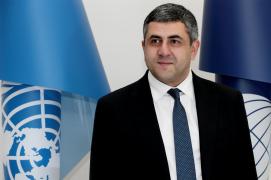
Tourism is far more than tourism alone. From infrastructure and communication to food production and transport, tourism’s considerable economic weight gives it the responsibility and the power to play a key role in any framework supporting the sustainable and responsible development of economies and societies, in line with the 17 Sustainable Development Goals (SDGs).
Not only has tourism been a sector of consistently above-average growth for eight straight years, with 1.3 billion international tourist arrivals recorded in 2017, but the sector’s cross-cutting nature and wide global reach make it an effective tool to contribute to all of the SDGs that are charting our common action towards 2030.
The SDGs and the commitment behind them, the 2030 Agenda for Sustainable Development, serves as the foundation for partnerships that work towards improving livelihoods, the environment and global peace. One such partner is the One Planet network, helping to support partners accelerate the shift to sustainable consumption and production patterns across sectors – outlined in SDG 12 – through a global trust fund.
There is a particular and clear connection between Goal 12 and tourism. If the tourism sector harnesses innovation and strengthens partnerships that are grounded in commitment to positive change, it can decouple its growth from the use of finite natural resources to continue growing sustainably – and thus competitively. Natural resources are at the core of tourism’s competitiveness. This is why Target 12.b of Goal 12 is dedicated to monitoring tourism’s impacts on ensuring sustainable consumption and production.
Accelerate the shift
In line with this target, any new and existing initiatives, partnerships, projects and activities in tourism must meet the needs of the sector – of tourists, service providers and all other sector stakeholders – while using fewer natural resources and/or using them more efficiently.
Their success at this can be measured, and thereby improved, through robust monitoring of tourism impacts including energy and water use efficiency, climate change mitigation, waste management, local sourcing, sustainable land use, biodiversity protection and decent employment.
In promoting the innovative, sustainable solutions and best practices that exist today, we can raise awareness of tourism’s real and positive impacts on the ground and inspire public decision makers and private companies to take action. The One Planet – Sustainable Tourism Programme exists for this purpose. UNWTO leads the programme, the governments of France, Morocco and Republic of Korea are the co-leads, and it is supported by the 10YFP Secretariat at UN Environment.
On 18 July 2018, during the United Nations High-Level Political Forum on Sustainable Development, the Sustainable Tourism Programme joined forces with the One Planet – Sustainable Buildings and Construction Programme to explore innovative circular economy solutions with strong potential to advance Goal 12. This transversal focus, igniting and strengthening partnerships across stakeholders, is important for speeding up progress towards not only Goal 12 but also several other SDGs, including all of those under review at the Forum.
A wide reach
In 2017-2018 the tourism sector moved decisively forward in its collaborative actions to implement Goal 12 on the ground. Countries, destinations and businesses around the world are in many cases doing more to link tourism with Goal 12 than was previously understood. Implementation of sustainable practices in tourism is having a multiplier effect on embedding those practices in other areas.
For many governments tourism is a priority sector for implementation of broader national policies for green growth, sustainable consumption and production, sustainability certification, resource efficiency, waste and emissions reduction, and biodiversity protection.
I urge policy makers to leverage tourism’s potential to advance implementation of Goal 12 and the 2030 Agenda. Where evidence of this potential is not available, I encourage commitment to developing the necessary tools to start measuring.
Empowering destinations to lead the change
The Sustainable Tourism Programme demonstrates the power of enhanced and engaged partnerships. Through combining the expertise, technical capacity and reach of governments, NGOs, international organizations, business and academia, we have overseen activities that have enhanced private sector engagement and awareness of SDG implementation strategies and practices, while better policies are being made using technical expertise and best-practice guidelines in sustainability and tourism ethics.
UNWTO is wholly committed to empowering destinations to develop, adopt, promote, replicate and scale up sustainable consumption and production practices in tourism by 2030. With the support of Switzerland we have launched the Tourism for SDGs Platform online for policy makers, companies and all tourism stakeholders to engage in SDG implementation strategies. The platform’s three main features, Learn, Share and Act, are also calls for action, conversation and collaboration towards a sustainable tourism sector.
With technological advances, circular economy thinking and the right measurement systems, we hope to eventually find ways that tourism can, instead of balancing growth with resource use, actually create resources for other sectors and support the sustainability of humanity and the planet. As we continue down this path we must remember: we are one planet and must travel with care.
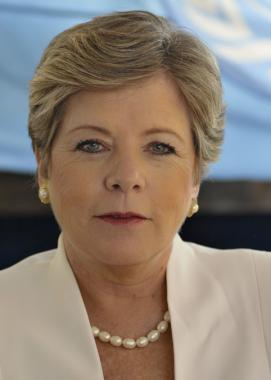
The High-level Political Forum being held at the United Nations’ headquarters in New York, from July 9 to 18, encourages member countries to present their progress on the implementation of the 2030 Agenda for Sustainable Development, adopted in 2015, and to exchange experiences on building more resilient societies. With this aim, the Forum this year is focused mainly on five of the 17 Sustainable Development Goals (SDGs), the implementation of which contributes to strengthening economic, social and environmental resilience.
Moving toward more resilient societies is an even greater challenge for our region due to its high degree of vulnerability to natural disasters, particularly in Central America and the Caribbean, a vulnerability that is increasing as a result of climate change. Between 1990 and 2017, there were 345 climate-related disasters in the small island states of the Caribbean, and their impact represents an additional burden on these countries, which cannot take advantage of economies of scale because of their size. In addition, they have been characterized by high levels of indebtedness that have limited budget allocations toward prevention, mitigation and post-disaster reconstruction, to the detriment of investment in other sectors that are key to sustainable development. For that reason, the Economic Commission for Latin America and the Caribbean (ECLAC), in the framework of its strategy “The Caribbean First”, has highlighted the current context of environmental crisis and financial vulnerability as an opportunity to create a multilateral debt relief mechanism for Caribbean countries, with the aim of freeing up resources to create a fund for investment in low-carbon climate adaptation and mitigation.
Throughout the region, the ability to respond to climatic and environmental challenges is weakened by the persistence of inequality in its various dimensions, the effects of which are worsened by climate change. This phenomenon implies a double inequity: the highest-income groups are the main sources of greenhouse gas emissions – since they are the biggest consumers of fossil fuels – while the poorest people are the most vulnerable to their effects, given their lower capacity for mitigation and adaptation. The reduction in income inequality seen in the first decade of this century has halted in recent years, and the gap is still one of the biggest worldwide: on a regional scale, the income of the wealthiest quintile of the population represents about 45% of household income, while the average income of the poorest quintile accounts for just 6% of the total.
In Latin America and the Caribbean – given the high degree of urbanization which, according to UN data, will reach 83.6% in 2030 – cities emerge as one of the strategic and priority spaces for efforts to foster sustainable and resilient development with the contribution of multiple stakeholders. On a global level, cities concentrate an ever higher percentage of the population and are responsible for the largest proportion of energy use and greenhouse gas emissions.
The transition toward greater participation of renewable and clean energy sources represents a priority opportunity, not just for urban sustainability, but to fuel the growth of productive sectors with the incorporation of technological progress. Changing the energy matrix of mobility in cities’ energy strategy and ensuring its accessibility is key to sustainable investment and can be a significant contribution to the achievement of the Paris Agreement and the 2030 Agenda.
The second meeting of the Forum of the Countries of Latin America and the Caribbean on Sustainable Development, held in April 2018 at ECLAC’s headquarters in Santiago, Chile, was an opportunity to debate and exchange experiences about the priority issues for cooperation and sustainable investment and to involve diverse actors in the implementation of the global sustainability agendas.
Closing the multiple inequality gaps in cities and territories is a fundamental condition for achieving sustainable and resilient development in the region. The strategy must be underpinned by more harmonious governance mechanisms among the different levels of government and by strengthening their financing. These challenges call for a renewed conversation between the State, the market and society and an increased capacity to form coalitions and bolster institutions in order to foster sustainable policies that promote resilience on a global, regional, national and local scale.